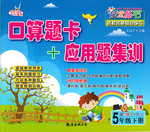The Hunan Satellite TV(HNTV) show “Where are we going, Dad?” is a big hit. Many famous stars brought their children to a strange village alone, and they had to spend 72 hours with their children there. The program fully showed us a modern version of the “how to be a good father”. As the young parents today are too busy to take care of their children, this new form of “Lost on the way” played by nanny Daddy and cute kids triggered(触发)a lot of people’s emotional resonance(共鸣). Both the kids and their parents will find that their hearts are being drawn closer. But this kind of feeling has just proved that there is a big spiritual barrier between the modern parents and children.
The TV shows like “Children are hard to support!”, “Where are we going, Dad?”, “hot mom” and “cute kids” are becoming more and more popular. All of these show the new parents’ confusion in children’s education and the appeal for the balance between career and family.
In real life, on the one hand the young parents feel helpless because they are too busy to accompany their children under the pressures of work and life; on the other hand they continue to do so. The data collected by HNTV shows that nearly two-thirds of their audience are female, among whom 36% are aged from 25 to 34.We can imagine such a scene that one evening a young mother is watching the show with her young children, while her husband is still at work or trapped in socializing, or maybe is just playing computer games in the bedroom. The story of a child without the company of father is still going on. In fact, it is sometimes the same to mothers. In a modern family, it is often the old who take the responsibility of raising a child. The participation of mother in the children’s education is also very low.
It is just this kind of confusion where the parents have gone in the modern family education, and where the parents will guide their children to go that “Where are we going, Dad?” shows us. If a child wants to grow up healthily and safely into a modern citizen with independent personality and free spirit, it is very important for him or her to follow the parents who serve as their first teacher. Maybe this is the real reason why such kind of TV programs could get hot. The truth is that children will go where their parents go; and society will go where the children go.
1.In raising a child in modern society, parents should ________.
A. play computer games with their children
B. keep their children at home to avoid socializing
C. balance well between family and career
D. break down the barrier between children and teachers
2.Which of the following can be inferred in the passage?
A. Parents shouldn’t entirely leave the education of children to the old.
B. 36% of the audience of the program are female aged from 25-34.
C. The program shows us the confusion where the parents and children will go to play.
D. In a modern family it is often mothers who are responsible for raising a child.
3.Which one is the best title of the passage?
A. Confusion Behind “Where are we going, dad?”
B. Modern Education is Important
C. Nanny Daddy and Cute Kids
D. New problems in Modern Children’s Education
4.What attitude towards modern family education does the author express in the second paragraph?
A. Proud. B. Worried.
C. Optimistic. D. Indifferent.
5.What does the underlined word “participation” probably mean?
A. taking responsibility
B. taking apart
C. taking part
D. keeping company

 口算题卡加应用题集训系列答案
口算题卡加应用题集训系列答案